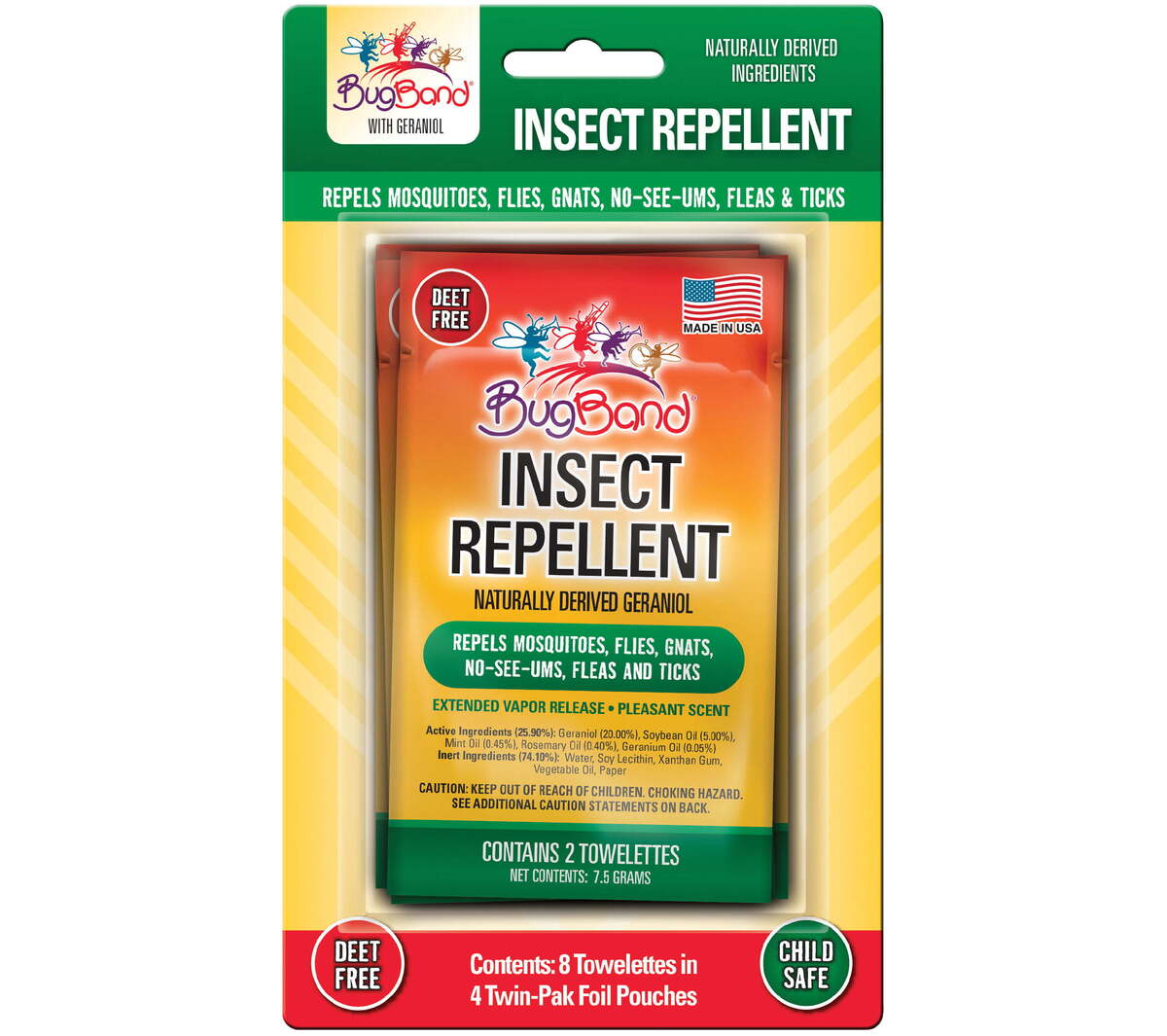Home>Gardening News and Trends>Latest News>What Multimedia Element Would Enhance A Speech About Identifying Bugs And Insects?


Latest News
What Multimedia Element Would Enhance A Speech About Identifying Bugs And Insects?
Published: November 29, 2023
Discover the latest news on multimedia elements that can enhance your speech about identifying bugs and insects. Enhance your presentation with captivating visuals and engaging audio.
(Many of the links in this article redirect to a specific reviewed product. Your purchase of these products through affiliate links helps to generate commission for Chicagolandgardening.com, at no extra cost. Learn more)
Table of Contents
Introduction
When it comes to delivering a speech about identifying bugs and insects, incorporating multimedia elements can greatly enhance its effectiveness. Multimedia elements, such as visual aids, videos, audio elements, and interactive components, can engage the audience, provide a deeper understanding of the topic, and make the speech more memorable.
The use of multimedia in presentations has become increasingly popular in recent years due to its ability to captivate and hold the attention of listeners. In today’s digital age, people are accustomed to receiving information through various media, and speeches are no exception. By utilizing multimedia elements, speakers have the opportunity to not only educate but also entertain their audience.
The topic of bugs and insects is particularly suited to multimedia enhancement. These creatures are often small, intricate, and not easily observed in everyday life, making it challenging to convey their details solely through words or static images. However, by incorporating multimedia elements into the speech, presenters can bring these creatures to life, making the information more vivid, engaging, and accessible to the audience.
Throughout this article, we will explore the different types of multimedia elements that can be used to enhance a speech on identifying bugs and insects. From visual aids to videos, audio elements to interactive components, we will discuss how each of these elements can help create a more compelling and informative speech. So let’s dive in and discover how multimedia can elevate your presentation on bugs and insects.
Importance of multimedia in enhancing speeches
When delivering a speech, it is crucial to capture and maintain the audience’s attention. This is where multimedia elements play a vital role. Incorporating multimedia into speeches not only enhances the overall presentation but also helps in conveying complex information more effectively. Here are several reasons why multimedia is essential in enhancing speeches:
1. Engagement: Multimedia elements, such as visuals, videos, and interactive components, add an interactive and dynamic aspect to a speech. It helps to engage the audience on multiple sensory levels, making the information more compelling and memorable. Rather than solely relying on words, multimedia elements create a multi-dimensional experience that captures and sustains the audience’s interest.
2. Clarity: Some information, like the identification of bugs and insects, can be challenging to explain only through verbal descriptions. By incorporating visual aids, speakers can showcase images, diagrams, and charts to illustrate the characteristics and details of these creatures. This visual representation helps clarify complex concepts and ensures that the audience understands the information being presented.
3. Retention: Studies have shown that people remember information better when it is presented both visually and audibly. Multimedia elements provide a multi-sensory experience, enhancing the retention of knowledge. By combining visuals, audio effects, and interactive elements, speakers can create a more memorable and impactful speech that sticks with the audience long after the presentation is over.
4. Accessibility: Not all audience members may have the same level of familiarity or prior knowledge about bugs and insects. By using multimedia elements, speakers can make the information more accessible to a wider range of individuals. Visual aids and diagrams help provide a visual reference for those who may struggle with abstract concepts, ensuring that everyone can follow along and understand the subject matter.
5. Emotional connection: Multimedia elements have the power to evoke emotions and create a personal connection with the audience. By incorporating relevant images or videos, speakers can tap into the audience’s emotions, inspiring empathy or curiosity. This emotional connection helps to keep the audience engaged and invested in the speech, enhancing their overall experience.
Overall, the use of multimedia elements in speeches is instrumental in capturing and maintaining the audience’s attention, enhancing understanding, and creating a memorable experience. By leveraging the power of visuals, videos, and interactive elements, speakers can elevate their presentations and make a lasting impact on their audience.
Overview of bugs and insects
Before delving into the various multimedia elements that can enhance a speech about identifying bugs and insects, it’s important to have a basic understanding of these fascinating creatures.
Bugs and insects belong to the class Insecta, which is the largest group of organisms on Earth. They can be found in almost every habitat, from the depths of the oceans to the highest mountains. Insects play vital roles in ecosystems as pollinators, decomposers, and as a source of food for other animals.
Insects come in a wide variety of shapes, sizes, and colors. They have six legs, a three-part body (head, thorax, and abdomen), antennae, and in most cases, wings. Bugs, on the other hand, are a specific group of insects that have specialized mouthparts for piercing and sucking, like a mosquito or a bedbug.
Identifying bugs and insects can be challenging due to their vast diversity. There are millions of species, with new ones being discovered all the time. Each species has its own unique characteristics, behaviors, and adaptations that allow them to thrive in different environments.
When identifying bugs and insects, it is essential to observe key features such as the shape and size of their bodies, the presence or absence of wings, the coloration and patterns on their bodies, and any specific features like antennae, legs, or mouthparts. These characteristics can help differentiate between different species and provide valuable information about their behavior and ecology.
Common examples of bugs and insects include butterflies, beetles, ants, bees, grasshoppers, dragonflies, mosquitoes, spiders, and many more. Each of these species has its own unique set of characteristics and plays a specific role in the ecosystem.
Understanding the basics of bugs and insects is essential for a speech focused on identification. By providing an overview of the diverse world of bugs and insects, speakers can set the stage for the importance of accurate identification and the value of multimedia elements in enhancing the audience’s understanding of these incredible creatures.
Types of multimedia elements
Incorporating multimedia elements in a speech about identifying bugs and insects not only adds visual appeal but also enhances the overall delivery of information. Here are several types of multimedia elements that can be used to enrich the speech:
1. Visual aids: Visual aids include images, diagrams, charts, and infographics that visually represent concepts, characteristics, and details about bugs and insects. These visual aids help the audience visualize the appearance, behavior, and unique features of different species. They can be displayed on slides or handouts to complement the spoken content and provide a visual reference for the audience.
2. Videos and animations: Videos and animations are powerful tools to showcase the behavior and movement of bugs and insects. They can capture footage of insects in their natural habitats, display their life cycles, and demonstrate unique behaviors such as hunting or mating rituals. Videos and animations add an immersive element to the speech, allowing the audience to observe these creatures in action.
3. Audio elements: Audio elements can be used to augment the speech by incorporating sounds produced by bugs and insects. For example, playing the buzzing sound of a bee or the chirping of crickets can provide an auditory experience that enhances the atmosphere and reinforces the message. Audio elements can also include narrations, music, or sound effects to create a mood or evoke specific emotions related to bugs and insects.
4. Interactive elements: Interactive elements allow the audience to actively participate in the speech and engage with the content. This can include quizzes, polls, or interactive games related to bugs and insects. By incorporating interactive elements, speakers can make the learning experience more interactive, engaging, and enjoyable for the audience, facilitating better retention of information.
5. Live specimens or props: If possible, bringing in live specimens or props can significantly enhance a speech on identifying bugs and insects. This hands-on approach allows the audience to observe the creatures up close, encouraging a deeper connection and understanding. Whether it’s showcasing preserved insect specimens, models, or even live insects in display cases, these props can provide a tangible experience that complements the speech content.
By combining these different types of multimedia elements, speakers can create a multi-dimensional experience that appeals to various senses and learning styles. Experimenting with different combinations of these elements can result in a more engaging and impactful presentation on the identification of bugs and insects.
Visual aids
Visual aids are a powerful tool for enhancing a speech about identifying bugs and insects. They allow the audience to visually understand and connect with the information being presented. Here are some examples of visual aids that can be used:
1. Images: Incorporating images of bugs and insects can provide a clear visual representation of their appearance, patterns, and unique features. By displaying high-quality images of different species, speakers can help the audience differentiate between similar-looking insects and highlight specific characteristics that aid in identification.
2. Diagrams and charts: Diagrams and charts can be used to illustrate the anatomy and body structures of bugs and insects. These visual representations help in explaining the different body parts, such as the head, thorax, abdomen, wings, and legs. Diagrams can also highlight specific adaptations or features that are crucial for identification.
3. Infographics: Infographics are a visually appealing way to present complex information about bugs and insects. By combining images, text, and symbols, infographics help condense and organize information into easily digestible sections. Infographics can be used to showcase the life cycles, habitats, feeding habits, or other interesting facts about various insects.
4. Comparative visuals: Comparative visuals can aid in highlighting the differences between similar-looking bugs and insects. For example, displaying a side-by-side comparison of two butterflies with similar patterns but different colors can help the audience grasp the importance of paying attention to specific details when identifying insects.
5. Maps and distribution charts: Maps and distribution charts can be used to showcase the geographic distribution of certain bugs and insects. Highlighting the regions or habitats where specific species are commonly found can provide valuable information about their natural range and allow the audience to visualize their presence in different areas.
When using visual aids, it is essential to ensure they are clear, relevant, and visually appealing. The visual aids should complement the spoken content and reinforce the message being communicated. Additionally, it is crucial to provide proper attribution for any images or information used to maintain credibility and avoid plagiarism.
Visual aids are an effective way to enhance a speech on identifying bugs and insects by providing the audience with a visual reference for the information being presented. By incorporating well-designed and engaging visual aids, speakers can facilitate a deeper understanding and appreciation for the world of bugs and insects.
Videos and animations
Videos and animations are an impactful way to enhance a speech about identifying bugs and insects, providing a dynamic and immersive experience for the audience. By incorporating videos and animations, speakers can bring the world of bugs and insects to life, showcasing their behavior, movement, and unique characteristics. Here are some ways videos and animations can enhance the speech:
1. Behavior and movement: Videos and animations can capture the behavior and movement of bugs and insects in their natural habitats. Whether it’s showing the hunting techniques of a praying mantis, the intricate nesting behavior of bees, or the graceful flight of butterflies, videos and animations allow the audience to witness these actions firsthand and gain a better understanding of how bugs and insects interact with their environment.
2. Life cycles: Videos and animations are excellent tools for illustrating the life cycles of bugs and insects. From the egg stage to larva, pupa, and finally the adult stage, videos can visually guide the audience through each phase of the life cycle. This helps the audience grasp the transformation and development these creatures undergo, showcasing the incredible diversity and complexity of their life histories.
3. Environmental interactions: Videos and animations can demonstrate the interactions between bugs and insects and their surrounding environment. For example, showcasing the symbiotic relationship between ants and aphids, or the pollination process as bees move from flower to flower, helps the audience understand the ecological impact and interconnectedness of bugs and insects within ecosystems.
4. Comparative visuals: Videos and animations can highlight the differences between similar-looking bugs and insects. By showcasing side-by-side comparisons of different species, speakers can point out distinct features or behaviors that aid in identification. This visual comparison provides a valuable reference for the audience and reinforces the importance of paying attention to specific details when identifying insects.
5. Close-up details: Videos and animations allow speakers to zoom in and focus on the intricate details of bugs and insects. By highlighting specific body parts, such as antennae, wings, or mouthparts, videos and animations enable the audience to observe and understand the key characteristics essential for accurate identification. This level of detail is challenging to convey solely through written or spoken descriptions.
When incorporating videos and animations, it is important to ensure they are visually clear, well-produced, and relevant to the topic. Videos should be properly sourced and credited to respect the copyright of the content creators. Additionally, it is advisable to preview and test the videos beforehand to ensure they seamlessly integrate into the speech and enhance the overall delivery of information.
Videos and animations add a captivating element to a speech about identifying bugs and insects, allowing the audience to visually immerse themselves in the world of these fascinating creatures. By incorporating well-selected and well-presented videos and animations, speakers can engage and educate the audience in a dynamic and memorable way.
Audio elements
Audio elements can be a powerful addition to a speech about identifying bugs and insects, enhancing the overall experience for the audience by incorporating sound effects, narrations, or music. By utilizing audio elements, speakers can create a more immersive and engaging environment. Here are some ways audio elements can enhance the speech:
1. Sound effects: Incorporating sound effects can provide an auditory dimension to the speech. For example, playing the buzzing sound of bees, the chirping of crickets, or the rhythmic clicking of a mantis can help create a more realistic and immersive experience for the audience. Sound effects can convey the unique sounds associated with certain bugs and insects, making the information more memorable.
2. Narrations: Using a narration or voice-over can provide an informative and engaging accompaniment to visual elements. A well-paced and expressive narration can help guide the audience through the speech, providing additional details about the bugs and insects being discussed. The tone and delivery of the narration can also help evoke emotions or create a specific atmosphere in the presentation.
3. Music: Incorporating appropriate music can enhance the mood and atmosphere of the speech. Soft and soothing background music can create a calm and relaxing environment, while energetic or suspenseful music can generate excitement or intrigue. Choosing music that complements the content and theme of the speech can help captivate the audience and evoke emotions associated with bugs and insects.
4. Ambient sounds: Ambient sounds can add depth and realism to the speech. For example, including the sounds of nature, such as chirping birds or rustling leaves, can transport the audience to the natural habitats of bugs and insects. These background sounds can create a more immersive experience, making the audience feel like they are right there in the environment being described.
5. Soundscapes: Creating a soundscape involves blending different audio elements to create a rich and immersive audio environment. By combining sound effects, ambient sounds, and subtle background music, speakers can transport the audience to specific settings, such as a rainforest, meadow, or garden, where bugs and insects thrive. This multi-layered audio experience adds depth and enhances the overall ambiance of the speech.
When incorporating audio elements, it is important to consider the quality of the audio, ensuring it is clear, balanced, and appropriate for the audience and the context of the speech. It is also essential to respect copyright laws and properly credit any music or sound effects used in the presentation.
Audio elements can significantly enhance a speech about identifying bugs and insects by providing a multi-sensory experience for the audience. By integrating sound effects, narrations, music, and ambient sounds, speakers can engage and captivate the audience, creating a more immersive and memorable presentation.
Interactive elements
Interactive elements are valuable additions to a speech about identifying bugs and insects, as they actively engage the audience and encourage participation. By incorporating interactive elements, speakers can create a more dynamic and immersive experience for the audience. Here are several examples of interactive elements that can enhance the speech:
1. Quizzes: Including quizzes related to bugs and insects can be an effective way to test the audience’s knowledge and engagement. The speaker can pose questions about bug identification, behavior, or fun facts, allowing the audience to participate by providing their answers. Quizzes promote active learning, reinforce the information presented, and keep the audience actively involved in the speech.
2. Polls: Introducing polls during the speech can encourage the audience to share their opinions or preferences regarding bugs and insects. Speakers can use audience response systems or online polling platforms to gather instant feedback on topics such as favorite insects, memorable encounters, or misconceptions. Polls create an interactive environment and foster a sense of participation among the audience members.
3. Interactive games: Incorporating interactive games related to bugs and insects can make the speech more enjoyable and memorable for the audience. For example, a “Bug Identification” game can involve showing images or descriptions of insects, and the audience can attempt to guess the correct identification. Games add an element of fun and competition, elevating the overall engagement of the audience.
4. Hands-on activities: If the setting allows for it, incorporating hands-on activities can provide a unique and immersive experience. For example, setting up a bug display where the audience can handle preserved specimens or interact with live insects can create a tangible and memorable connection with the topic. Hands-on activities engage multiple senses and offer a more memorable and impactful learning experience.
5. Q&A sessions: Providing dedicated time for a question-and-answer session allows the audience to actively participate in the speech. It encourages them to seek clarification, share personal experiences, or seek further information on bugs and insects. Q&A sessions facilitate a deeper engagement with the topic and foster a sense of discussion and dialogue between the speaker and the audience.
When incorporating interactive elements, it is important to ensure that they align with the objectives and tone of the speech. The level of interactivity should be appropriate for the audience and the setting, and proper technology or materials should be prepared and tested beforehand to ensure a smooth and seamless experience for everyone involved.
Interactive elements add a dynamic and engaging dimension to a speech about identifying bugs and insects, allowing the audience to actively participate and learn. By incorporating quizzes, polls, games, hands-on activities, or Q&A sessions, speakers can create a more immersive and memorable experience for the audience, fostering deeper engagement and understanding of the topic.
Conclusion
Enhancing a speech about identifying bugs and insects with multimedia elements can greatly contribute to its effectiveness. By incorporating visual aids, videos and animations, audio elements, and interactive components, speakers can create a more engaging, informative, and memorable presentation.
The use of visual aids, such as images, diagrams, charts, and infographics, helps the audience visualize the characteristics and details of bugs and insects. Videos and animations bring these creatures to life, showcasing their behavior, movement, and unique features. Audio elements, including sound effects, narrations, and music, add an auditory dimension and create a more immersive experience. Interactive elements, such as quizzes, polls, games, and hands-on activities, actively engage the audience and foster participation.
By leveraging these multimedia elements, speakers can captivate the audience’s attention, enhance clarity and understanding, facilitate better retention of information, and create a personal connection. Moreover, multimedia elements make the topic of bugs and insects more accessible to a wider range of individuals and emphasize the importance of accurate identification.
When incorporating multimedia elements, it is crucial to ensure that they are relevant, clear, and visually appealing. Proper sourcing and attribution should be followed to respect copyright laws and maintain credibility. Selecting the right combination of multimedia elements that suit the objectives and tone of the speech allows the audience to have an enriching and enjoyable experience.
In conclusion, by harnessing the power of multimedia elements, speakers can elevate their speeches on identifying bugs and insects. The use of visual aids, videos and animations, audio elements, and interactive components enhances engagement, improves comprehension, fosters retention, and creates a memorable experience for the audience. So, embrace the potential of multimedia and unleash the full impact of your speech on bugs and insects.








